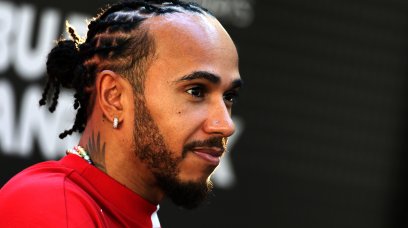Max Verstappen's blistering qualifying pace appeared to show that Red Bull was unmatched across the entire lap of the Bahrain International Circuit. A close look at the data tells a different story, as it was Charles Leclerc who was faster over more parts of the lap, but Verstappen took away time in key areas around the 5.4km circuit. Although much has been said about the Aston Martin being a copy of the RB19 - with Sergio Perez quipping that "it's nice to have three Red Bull's on the podium" post-race - in reality the SF-23 mimics some of the traits of last years RB18.
Where does Verstappen make up the lap time?
We know Red Bull was running roughly 12kg overweight last season, with much of their off-season dedicated to getting close to the weight limit . Meanwhile the Ferrari was closer to their weight targets in 2022, electing to focus more on engine power and reliability during the winter break. The data seems to match up as Leclerc's quickest lap in Q3 compared to Verstappen's effort shows how the Ferrari was superior on all the main straights around the Bahrain International Circuit - reaching a top speed of 298kph in the speed trap compared to 295kph for Verstappen. This was the opposite last season as the RB18 gained the most on the straights compared to the F1-75, while Leclerc caught up through the high speed sections and on corner exit. This time the downforce from the RB19 is where Verstappen gains the most on Leclerc, particularly through the high speed Turn 7 and Turn 12. Verstappen has much better acceleration out of the tricky Turn 10 - where drivers often lockup on entry - but Leclerc gains most of the time down the straight into Turn 11. Verstappen is notably 10kph quicker into the braking zone of Turn 13, the downforce of the RB19 showing its hand yet again, but this is short-lived once the SF-23 uses its low-drag setup and superior acceleration into Turn 14. His acceleration onto the start/finish straight is 6kph faster but it's not long before Leclerc can go quicker just before the final timing line.
Alonso brilliant on the brakes
So where does Fernando Alonso fit into all of this? The Aston Martin was just six tenths off the best time of Verstappen. Our analysis after FP2 showed how the Spaniard was able to go deeper on the brakes than Verstappen into Turn 1 , while having slightly better traction through various points in the lap including Turn 8 and Turn 11. The RB19 was quicker on the straights than the AMR23, but those crucial traction zones on the abrasive Bahrain surface meant Alonso had better acceleration - but that was short-lived once the RB19 got up to speed. This translated in the race as the AMR23 was kinder on its tyres than the SF-23, which ultimately enabled Alonso to overtake Carlos Sainz in the closing stages. As our analysis on Friday also showed, Aston Martin was around three tenths slower than Red Bull in race trim - which meant catching them was out of the question. But with their superior straight-line speed it should be easier for Ferrari to outclass Aston Martin, given that Bahrain is the toughest of the year on tyres and prompted Leclerc to save a set of Softs by not running twice in Q3 due to the degradation - a trait the SF-23 has still carried over from its predecessor.
W14 drag costs Mercedes valuable time
A quick scan of Mercedes' lap times show that they were superior in one key area on the track - braking. Unlike Alonso, both Lewis Hamilton and George Russell's quickest laps in Q3 were characterised by just how much more speed they could carry into the crucial braking zones at Turns 4, 5, 10, and 14. This is likely down to the drag that is produced by the W14 that was highlighted by Hamilton post-race , which hurts their pace in the high speed corners and long straights. The result over the course of the race meant they were a second off the ultimate pace of Red Bull, while no match for Aston Martin as they suffered from similar tyre degradation issues as Ferrari. There were a lot of jokes made about Aston Martin under their Racing Point guise copying Mercedes in 2020 - the RP20 earning the nickname 'Pink Mercedes' due to their then-title sponsor BWT featuring prominently. But as Hamilton pointed out, the tables have turned with Team Silverstone producing a better car than Mercedes with their facilities. Could we see a 'Black Aston Martin' from the struggling team in the future?
Most read







